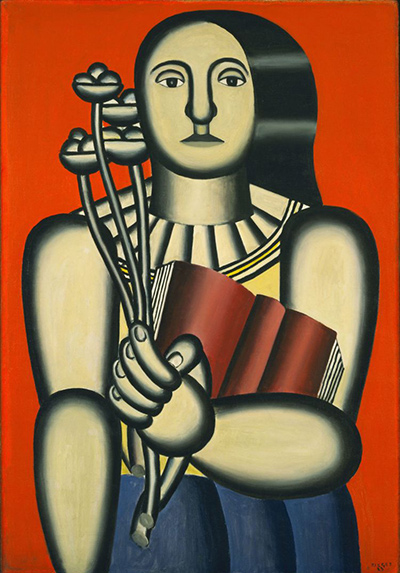Produced in 1923, Woman with a Book is a striking work of art by the celebrated French artist Fernand Leger, and a bold example of the populist Cubism artistic movement that he made so influential.
The eye catching piece features a woman clutching a bunch of flowers and holding an open book to her chest whilst staring blankly and directly at her audience. Although the subject matter could be considered delicate (a woman holding flowers), it is anything but subtle or dainty.
Conversely, the woman in the picture is undeniably strong and arresting with a defiant stance and possessing an unwavering glare at her onlookers.
For this reason, the piece is intense, simplistic and even mechanical to a degree. Indeed, the entire work of art is machine-like in appearance — the woman’s figure is exceptionally geometrically configured, her skin has a grey metallic sheen, it is polished like metal, and the contours of her body are brawny, robust and powerful.
She even has robotic androgynous features, so much so that one could argue we only know that she is a woman because the title suggests that she is one.
What is more, Leger himself said of his particular work that, “I had broken down the human body, so I set about putting it together again.”
The result is a surreal mixture, almost pop art in style, and certainly forceful with its use of vibrant primary colours (blue, red and yellow). These intense colours are beautifully vivd and offer a dramatic contrast when put against one another. The woman’s solid jet black hair in opposition to the red background is sharp and distinctive, as is her bright blue outfit.
One alleged influence of the notable piece is Leger’s enthusiasm for industrial revolution, something France was experiencing after the chaos of World War I.
Regardless of interpretations, it is undoubtedly a beautiful work of art in its own right; eye popping, captivating and fundamental.




